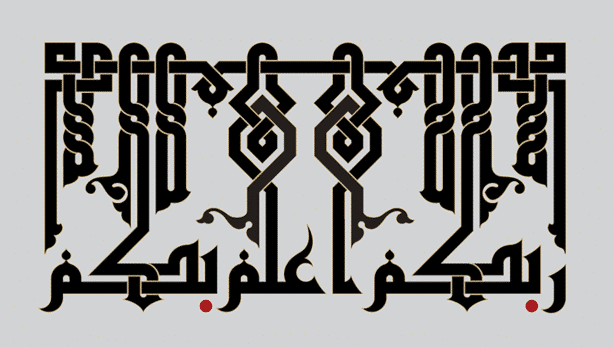Kufi Script
 Kufi script emerged during the early Islamic epoch, specifically after the establishment of the cities of Basrah and Kufah in the 8th century A.D. It quickly rose to prominence as the major priestly script of that era, earning the name “al-Khat al-Kufi” or Kufi script. Its creation marked a significant milestone in the development of Islamic calligraphy .
Kufi script emerged during the early Islamic epoch, specifically after the establishment of the cities of Basrah and Kufah in the 8th century A.D. It quickly rose to prominence as the major priestly script of that era, earning the name “al-Khat al-Kufi” or Kufi script. Its creation marked a significant milestone in the development of Islamic calligraphy .
One cannot help but be captivated by the unique features that set Kufi script apart. It is characterized by particular proportional measurements, notable angularity, and squareness. Unlike other scripts, Kufi exhibits extended horizontal lines alongside comparatively low verticals. Its wider-than-tall nature imparts a dynamic momentum, making it a preferred choice for oblong surfaces. The Handasi (geometrical) construction of Kufi allows for its adaptation to various spaces and materials, enhancing its versatility.
Kufi script has left an indelible mark on Islamic calligraphy. Its influence extends beyond its contemporaneous period, shaping various calligraphic styles throughout history. From ornamental forms to scripts designed for crucial texts, the Kufic script offers an astonishing array of techniques that are unparalleled and exceptional. Some styles exhibit “local” or “regional” peculiarities, reflecting the geographical features and cultural nuances of specific regions.
Despite its ancient origins, Kufi script continues to fascinate contemporary artists, calligraphers, and designers. Its timeless appeal and aesthetic beauty make it a sought-after choice for various creative endeavors. Whether it’s in logo designs, decorative arts, or architectural embellishments, Kufi script lends an air of elegance and cultural significance to any project.
The exploration and preservation of Kufi script are of utmost importance. By understanding its history, unique characteristics, and regional variations, we ensure that this rich heritage remains alive and appreciated by future generations. As we embrace modern technologies, let us not forget the beauty and wisdom encapsulated within the ancient strokes of Kufi script.
The journey into the world of Kufi script unveils a captivating art form with deep historical roots. Its creation during the early Islamic epoch and subsequent influence on Islamic calligraphy make it an essential element of cultural heritage. The distinct proportions, angularity, and wider-than-tall nature of Kufi script contribute to its unique allure. As we continue to explore the vast realm of art and design, let us embrace the enduring beauty and timeless appeal of Kufi script
